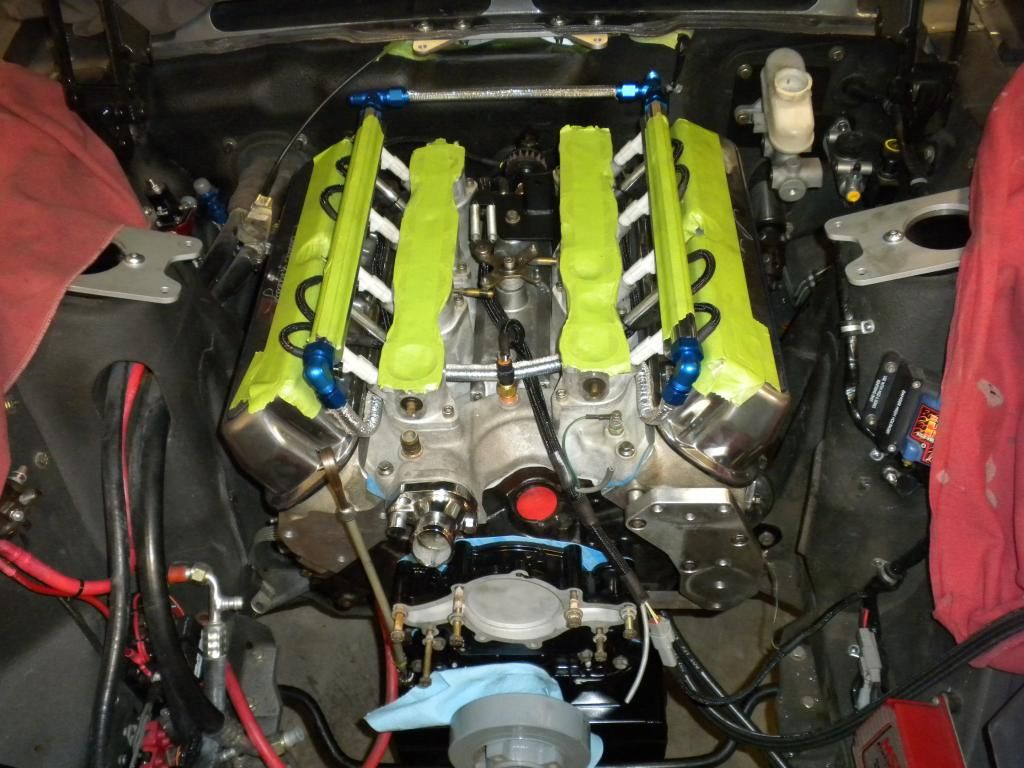Some of these items may sound persnickity but I spent many years in the OEM world and now in the custom world specializing in chasing gremlins so I am particular about how I like things to function and look.
Get in the habit of running your wiring through shrinkwrap. Not only does it help hold the wiring together while running it but you also now have shrinkwrap on your wiring to "finish" whatever sheathing you run... especially good with powerbraid. Comes in handy for injector wiring that is "pull to seat" that you can't just pop the connector off and never seems to be finished cleanly. If you don't run sheathing then now you've got nice shrinkable collars to hold your wiring together.

Anytime you take a cable (accel cable, parking brake cable, etc.. Lokar) out of the sheath shrink some shrink wrap over the end to keep it from unraveling. Same if you need to cut it... shrink wrap the area you are going to cut... cutoff wheel in the middle of the shrink wrap and it holds the strands together.
Get in the habit of dabbing anti-seize on any stainless hardware before you use it... especially if you are going to weld it. (I tack nuts to the backs of panels for mounting purposes so the components bolt down one handed) Stainless loves to gall and of course will seize on you at the worst possible time.
I guess after that one I should mention... Make everything boltable from one side of the panel!!! Pet peeve here... It's great that you've got your buddy, kids, or wife there to hold the wrench on the other side of the firewall right now but what about when you are on the side of the road or everyone is gone? Tack a nut to the backside of the panel or buy the tool to set threaded inserts. Build everything servicable because you are most likely the next person that will have to take that piece back off. Self tapping screws belong on metal buldings... not cars.
Adding on to that one as well... Make all components and individual harnesses removable. I deal with a lot of vehicles where components like the MSD box are hardwired into the car which is fine if it is never going to go bad... or have to be diagnosed... or have to be removed to access other components. Spend a few minutes to wire in connectors so that every component can be removed without having to take half the dashboard or wiring harness apart. When I wire EFI systems I run connectors to where they meet the vehicle harness so that if there is ever an issue I can remove the EFI system as a whole. I put connectors anywhere there may be a need to disconnect the wiring for any reason... I'd rather build it in now than end up cutting and splicing wires later. You can see in the pic below on this electronics panel for the current build I've even got connectors between the ISIS system and the XFI system in case I ever had to remove one or the other. (See my shrink wrap?!?!

)

If you are taking the third member out of a 9" axle housing instead of fighting it on the ground trying to pry through the old RTV, hang the housing by the U-bolts from an engine hoist or vehicle hoist with jack stands just below the axle tubes. Now you can tap down on the housing with a heavy mallet and gravity does the hard work. Once the seal breaks, the axle housing rests on the stands leaving your third member hanging free.
Someone made mention of clutches earlier on... Never assume your aftermarket clutch hydraulics match the application height of your aftermarket clutch. After you dial in your bell housing (you always do that right?!? ) Check the height of your clutch fingers with your flywheel and clutch torqued in place. Measure that against the installed height of your clutch slave and make sure the throw of your slave matches the throw of your clutch pressure plate. Figure in a little for wear as well.. those fingers will move out as the disk wears.




